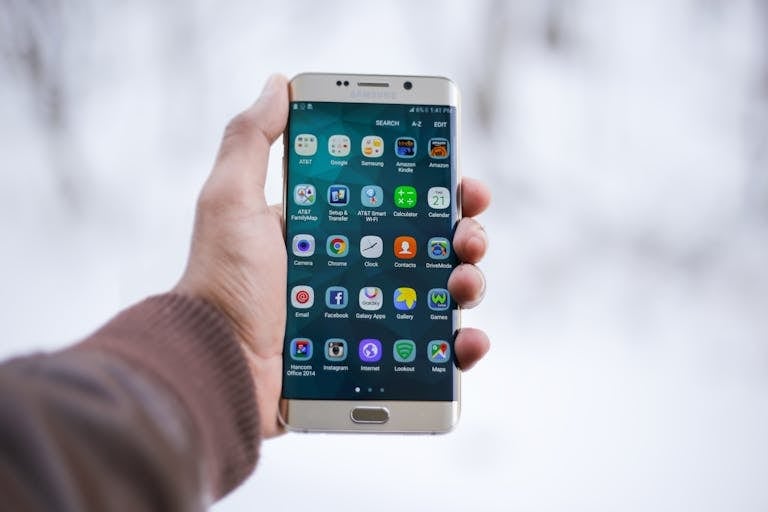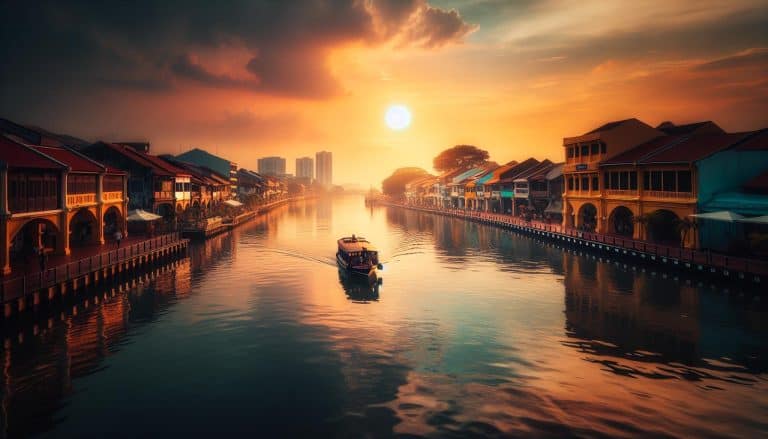Best Time To Visit Malaysia 2025 Guide
Nomadic Southeast Asia contains affiliate links and is a member of the Amazon Services LLC Associates Program. If you make a purchase using one of these Amazon links, I may receive compensation at no extra cost to you. See my Disclosure Policy for more information.
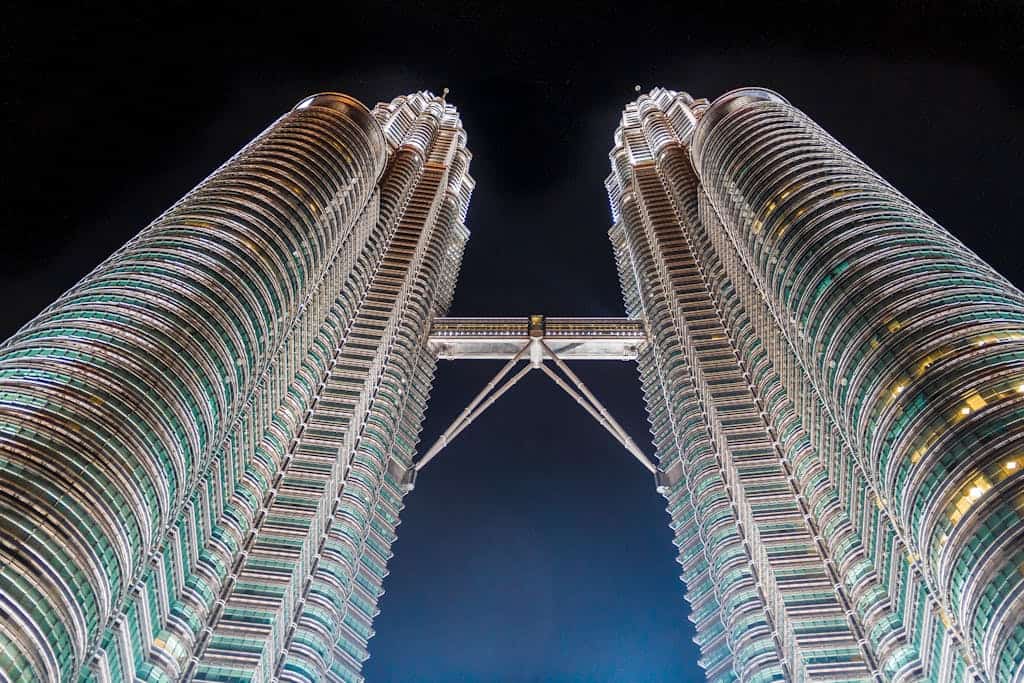
Want to experience Malaysia at its absolute finest? Smart move!
Timing your visit to this vibrant Southeast Asian gem can make all the difference transforming a good trip into an unforgettable adventure.
From the bustling streets of Kuala Lumpur to the pristine beaches of Langkawi, Malaysia offers a kaleidoscope of adventures, each one influenced by its distinct seasons.
Imagine climbing the Petronas Towers under clear blue skies, exploring historic Malacca without getting caught in a downpour, or diving into Sipadan’s crystal-clear waters when visibility is at its peak. That’s the power of planning!
This guide is your key to unlocking the ideal Malaysian getaway.
We’ll reveal the ideal times to visit each region, showing you how to avoid the worst of the monsoons or even take advantage of the unique experiences they offer.
We’ll cover everything from weather patterns and cultural festivals to peak seasons and insider tips, so you can craft an itinerary tailored to your preferences.
Whether you’re backpacking on a budget or seeking a luxurious escape, we’ll ensure your Malaysian adventure is nothing short of amazing.
Let’s dive in and make your dream trip a reality!
Key Takeaways
- Malaysia’s warm climate has two primary monsoon seasons, with the ideal times to visit changing by area: November to March for the west coast and March to October for the east coast.
- Big cultural celebrations such as Chinese New Year, Hari Raya, and Deepavali provide special experiences and must be thought about when organizing your journey.
- The dry time is perfect for outside fun and beach trips, while the wet time can still offer chances for cultural discovery in city places.
- Grasping the unique climate trends in Peninsular Malaysia and Malaysian Borneo can assist you in selecting the top spots for your preferences.
- Packing correctly for the season—light clothes for the dry season and water-resistant gear for the wet season—guarantees a pleasant travel experience.
Introduction to Malaysia’s Climate and Seasons
Overview of Malaysia’s Tropical Climate
Malaysia is famous for its hot, tropical weather, making it a place to visit all year.
The nation has steady temperatures between 77°F and 95°F (25°C to 35°C), with lots of humidity.
This warm climate is great for checking out green jungles, clean beaches, and lively towns.
But knowing the weather is important for planning your trip right.
The nation is split into two big areas: Peninsular Malaysia and Malaysian Borneo.
Both areas have a similar hot climate but show small differences in weather styles.
For instance, Peninsular Malaysia is usually a bit hotter, while Malaysian Borneo is famous for its chillier mountain zones.
For detailed weather information to help you plan your trip, check out AccuWeather’s Malaysia page.
Check out Nomadic Southeast Asia’s travel guide which gives detailed info about the regions weather and places to visit.
Understanding the Monsoon Seasons
So you’re dreaming of a Malaysian adventure? Awesome!
But before you start booking flights, let’s talk about the weather.
You see, Malaysia has these two monsoon seasons that can seriously impact your trip.
Understanding when they hit and where can make a HUGE difference in your experience.
West Coast Vibes:
Think Penang, Langkawi, Kuala Lumpur – these gems on the west coast shine brightest from November to March.
The skies are mostly sunny, perfect for exploring temples, beaches, and bustling cities.
Don’t worry too much about the Southwest Monsoon (May to September) – it usually brings short showers, not enough to ruin your fun.
East Coast Paradise (But with a Catch):
The east coast, home to stunning islands like Perhentian and Tioman, is a different story.
March to September is your prime time here.
The waters are calm, ideal for diving, snorkeling, and island hopping.
Now, here’s the catch: The Northeast Monsoon (November to February) brings heavy rain and choppy seas to the east coast.
Many resorts even close down!
So, what’s the secret to a perfect trip?
- Southwest Monsoon (May to September):
- This is your time to shine! Explore the Batu Caves without getting soaked, hike through the rainforest, or snorkel around Tioman Island.
- Just be prepared for a few afternoon showers – they’re usually short and refreshing.
- Northeast Monsoon (November to March):
- While the east coast is stormy, the west coast is your playground!
- Indulge in Penang’s street food, relax on Langkawi’s beaches, or wander through Malacca’s historical streets.
By knowing these weather patterns, you can plan your trip to Malaysia like a pro and make the most of your adventure!”
Best Time to Visit the Malaysian Peninsular

When planning your Malaysian adventure, timing is everything.
Instead of letting the monsoon seasons scare you off, let’s use them to our advantage!
Smart Planning Tips for Monsoon Season
Instead of avoiding Malaysia during monsoon seasons, use them to your advantage!
For instance, hotel rates often drop significantly on the east coast during the Northeast Monsoon.
If you’re a budget traveler who doesn’t mind some rain, you could score amazing deals in places like Tioman Island or Perhentian Islands.
Local Weather Wisdom: Malaysian locals will tell you that the weather patterns have become less predictable in recent years.
That’s why it’s smart to:
- Build some flexibility into your itinerary
- Pack a light raincoat or umbrella regardless of season
- Plan indoor and outdoor activities for each destination
Okay, let’s dive deeper into the best times to visit Peninsular Malaysia!
3 Diverse Malaysian Regions to Explore
1. West Coast (Langkawi, Penang, Kuala Lumpur):
- Best Time to Visit:
- December to February: Generally the driest months, ideal for beach holidays in Langkawi and exploring historic Penang.
- March to May: Shoulder season with pleasant weather and fewer crowds.
- Things to Consider:
- Southwest Monsoon (May to October): Expect more rain, especially in the afternoons.
- Haze: Occasional haze from Indonesian forest fires can occur during the dry season (June to September).
2. East Coast (Tioman Island, Perhentian Islands):
- Best Time to Visit:
- March to October: Enjoy the best weather with sunshine and calm seas, perfect for diving and snorkeling.
- Things to Consider:
- Northeast Monsoon (November to February): Heavy rain, strong winds, and rough seas. Many resorts on the east coast close during this period.
3. Inland Areas (Cameron Highlands, Fraser’s Hill):
- Best Time to Visit:
- March to May & September to November: Enjoy pleasant temperatures with less rain.
- Things to Consider:
- Year-round: These highland areas can be cool and misty, even during the dry season. Pack layers!
Key Considerations for All Regions
- Public Holidays: Expect higher prices and more crowds during major holidays like Chinese New Year, Hari Raya Aidilfitri, and Deepavali.
- Flexibility: As mentioned earlier, Malaysian weather can be unpredictable. Be prepared to adjust your itinerary if necessary.
I hope this regional breakdown helps you plan your trip!
Best Time to Visit Malaysian Borneo
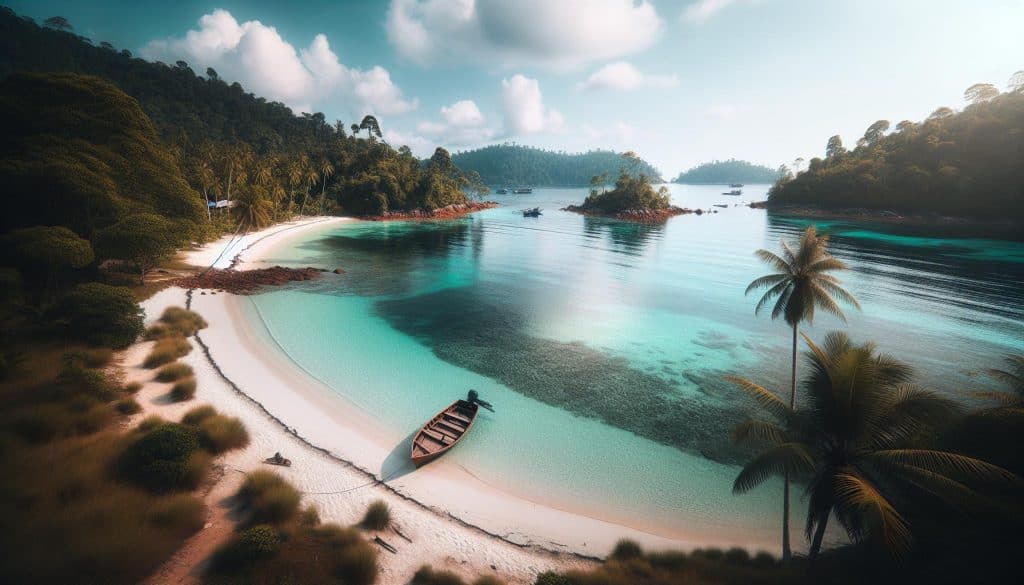
Exploring Sabah: Weather and Activities
Sabah, found in Malaysian Borneo, is heaven for nature fans and thrill-seekers.
The top time to go to Sabah is in the dry season, lasting from March till October.
This time gives sunny skies and nice weather, making it perfect for stuff like hiking Mount Kinabalu, scuba diving at Sipadan, or wandering through the green jungles.
If you’re thinking about a journey to Sabah, think about going from April to June for the finest diving weather.
The seas stay peaceful, and the view underwater is great, especially near Sipadan Island, one of the planet’s best diving places.
For extra advice on seeing Sabah, look at Nomadic Southeast Asia’s guide to traveling in Malaysia, which gives helpful tips for organizing your visit.
Exploring Sarawak: Weather and Activities
Sarawak, the other part of Malaysian Borneo, is famous for its deep cultural history and amazing natural views.
The ideal time to go to Sarawak is during the dry period, between March and October.
This is a great moment to check out the well-known:
- Mulu Caves
- Hike around Bako National Park
- Enjoy the lively Rainforest World Music Festival, which happens every July.
During the rainy time, which usually happens from November till February, strong rainfalls might make outside plans tough.
But, if you’re curious about cultural stuff, this time is still a great moment to check out Sarawak’s longhouses and understand the customs of the native groups.
For a full guide to traveling in Malaysian Borneo, look at Nomadic Southeast Asia’s travel guide.
By learning the climate trends in Sabah and Sarawak, you could organize your trip to Malaysian Borneo to fit your hobbies and enjoy your journey to the fullest.
Festivals and Events in Malaysia
Major Cultural and Religious Festivals
Malaysia is a mix of cultures, and its celebrations show this variety.
One of the biggest events is Chinese New Year, which often happens in January or February.
Around this period, places like Kuala Lumpur and Penang light up with lion dances, firecrackers, and bright decorations.
Another important celebration is Hari Raya Aidilfitri aka Eid Al-Fitr , which marks the finish of Ramadan.
It’s a moment for big meals, family meetups, and open homes where guests are kindly greeted.
Deepavali, the Hindu Festival of Lights, is another big event, celebrated in October or November.
Roads and houses are brightened with oil lamps, showing the win of light over shadows.
Thaipusam, happening in January or February, is a special and vibrant celebration, mainly at Batu Caves close to Kuala Lumpur.
For a closer look at Malaysia’s cultural events, see Nomadic Southeast Asia’s guide to traveling in Malaysia.
Seasonal Events and Celebrations
Malaysia also has lots of seasonal events that pull in tourists from all over the planet.
The Rainforest World Music Festival in Sarawak, happening each July, is a must-see for music fans.
It includes shows by musicians from all over the world in a beautiful jungle location.
Another well-known event is the George Town Festival in Penang, which honors art, tradition, and history every August.
For food lovers, the Malaysia International Gourmet Festival, hosted every year, shows off the finest Malaysian and global food.
If you’re traveling in the rainy season, think about going to indoor activities such as the Kuala Lumpur International Film Festival.
By matching your trip with Malaysia’s holidays and occasions, you’ll get to enjoy the nation’s deep traditions and lively parties up close.
Travel Tips for Different Seasons
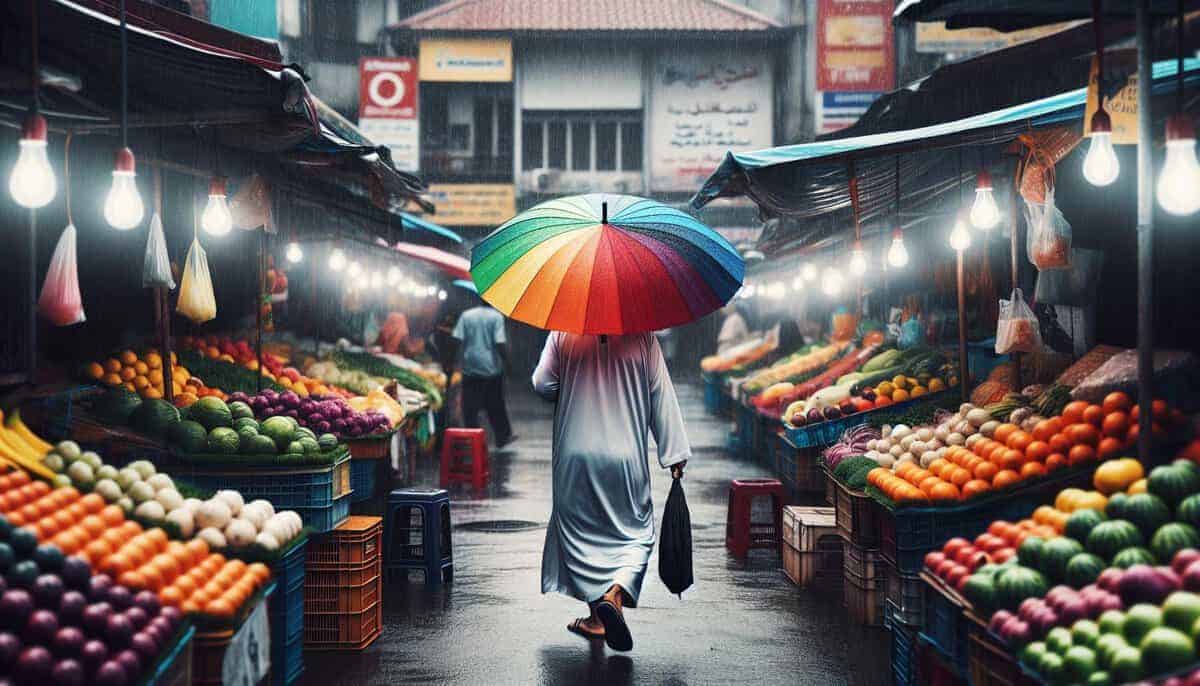
Packing Essentials for the Wet Season
Traveling to Malaysia in the rainy season (usually November through March on the east side and May till September on the west side) needs some planning.
Showers happen often, so bringing a light, water-resistant coat or poncho is necessary.
Fast-drying clothes and water-safe shoes or flip-flops help you stay comfy in surprise rain.
Remember a strong umbrella and a water-resistant bag to guard your gadgets and important stuff.
Mosquito spray is super important, especially if you’re wandering through jungles or countryside places.
For anyone organizing outside plans, look at the weather updates often and keep a second option for inside spots.
Checkout the Southeast Asia’s guide to traveling in gives more advice on making the best of your visit during wet months.
Traveling During the Dry Season
The dry period (March till October on the eastern coast and November till March on the western side) is the top time for outside activities in Malaysia.
Bring light, airy clothes to keep cool in the hot weather.
A solid pair of shades, sunblock, and a big hat are key to shielding yourself from sunlight.
If you’re thinking about going to places like Langkawi and the Perhentian Islands, pack swimsuits, snorkel equipment, and a refillable water bottle to keep yourself hydrated.
Comfy shoes for walking are essential when wandering around towns or hiking in nature parks. For extra packing advice and travel ideas, look at Nomadic Southeast Asia’s guide for backpackers.
By adjusting your packing and plans to match the time of year, you’ll be ready to experience all Malaysia has to give, rain or sun.
Regional Highlights Based on Seasons
Top Destinations for the Dry Season
The dry period in Malaysia is a great chance to check out its amazing shores, islands, and outdoor spots.
On the west side, Langkawi and Penang are popular choices.
Langkawi has clean beaches, fun water activities, and awesome sunsets, while Penang is famous for its colorful street art, tasty meals, and rich culture.
These places are best to visit from November to March when the skies are clear and the weather feels nice.
On the eastern coast, the Perhentian Islands, Redang, and Tioman are places you gotta visit in the dry season from March till October.
These spots are perfect for snorkeling, scuba diving, or just chilling by the super-clear water.
If you’re into adventure, Mount Kinabalu in Sabah is an awesome pick during the dry months, with clear skies and amazing views.
For more ideas, look at Nomadic Southeast Asia’s guide to traveling in Malaysia, which shows the top places for every season.
Top Destinations for the Wet Season
While the rainy season might bring showers, it’s still an awesome moment to check out Malaysia’s city life and cultural spots.
Kuala Lumpur, with its famous Petronas Towers, malls, and indoor places, works well for wet days.
Likewise, Malacca’s old landmarks and galleries are fun no matter the weather.
In Malaysian Borneo, the rainy time is a great moment to check out Sarawak’s cultural villages and longhouses, where people can discover the customs of native groups.
The jungles in Sabah and Sarawak stay green and lively around this period, making them perfect for taking nature photos.
For extra advice on traveling Malaysia in the rainy season, look at Nomadic Southeast Asia’s travel guide.
By picking places that match the time of year, you’ll get the best out of your visit to Malaysia, whether it’s bright or wet.
Final Thoughts
Malaysia is a place to visit all year, but knowing its warm weather and different regions can help you plan a great trip.
Whether you’re into the bright beaches on the west side, the green jungles of Borneo, or the lively cultural celebrations, planning your trip to match the best weather and events is important.
The dry time, usually from March till October, is perfect for outside fun, while the rainy season gives a calmer and peaceful vibe.
We’ve looked at how the western and eastern sides of Peninsular Malaysia are different in their weather, plus the special climates of Sabah and Sarawak in Borneo, Malaysia.
Also, Malaysia’s packed schedule of celebrations, from Chinese New Year to Hari Raya, adds a cultural layer that could make your visit even more unforgettable.
If you’re still not sure about when or where to travel, Nomadic Southeast Asia is a great tool to help with your plans.
As a blog focused on traveling and living in Southeast Asia, it gives direct advice, ideas, and motivation to assist you in getting the best out of your trip.
Whether you’re visiting for the first time or an experienced traveler, their knowledge can make your choices easier and improve your adventure.
Ultimately, the greatest moment to explore Malaysia relies on your goals and preferences.
With proper planning and tools, you’ll definitely experience a memorable journey in this stunning and varied nation.
Enjoy your trip!
Frequently Asked Questions (FAQs)
What is the best time to travel to Malaysia for good weather?
The greatest time to visit Malaysia for nice weather is usually from December to February, particularly on the west coast. In these months, you can look forward to reduced rainfall and enjoyable temperatures, making it perfect for outdoor fun and exploring.
Are there specific months to avoid when traveling to Malaysia?
Yes, it’s wise to stay away from traveling to Malaysia during the rainy season, which usually goes from May to October on the west coast and from November to March on the east coast. Strong rains can interfere with travel plans and restrict outdoor activities.
What are the peak tourist seasons in Malaysia?
The top travel times in Malaysia are in the dry months from December to February and during big holidays like Chinese New Year and Hari Raya. Anticipate bigger crowds and increased prices during these periods, so prepare properly.
How does the weather vary between Peninsular Malaysia and Malaysian Borneo?
Peninsular Malaysia usually has a tropical weather with clear wet and dry periods, while Malaysian Borneo has a more moist climate with rain spread all over the year. This indicates that the ideal times to visit can vary greatly between the two areas.
What cultural festivals should I consider when planning my trip to Malaysia?
When organizing your journey, think about timing your stay around important cultural celebrations like Chinese New Year (January/February), Hari Raya, Eid and Deepavali (Diwali). These occasions provide a special look into Malaysia’s diverse cultural history and lively festivities.




